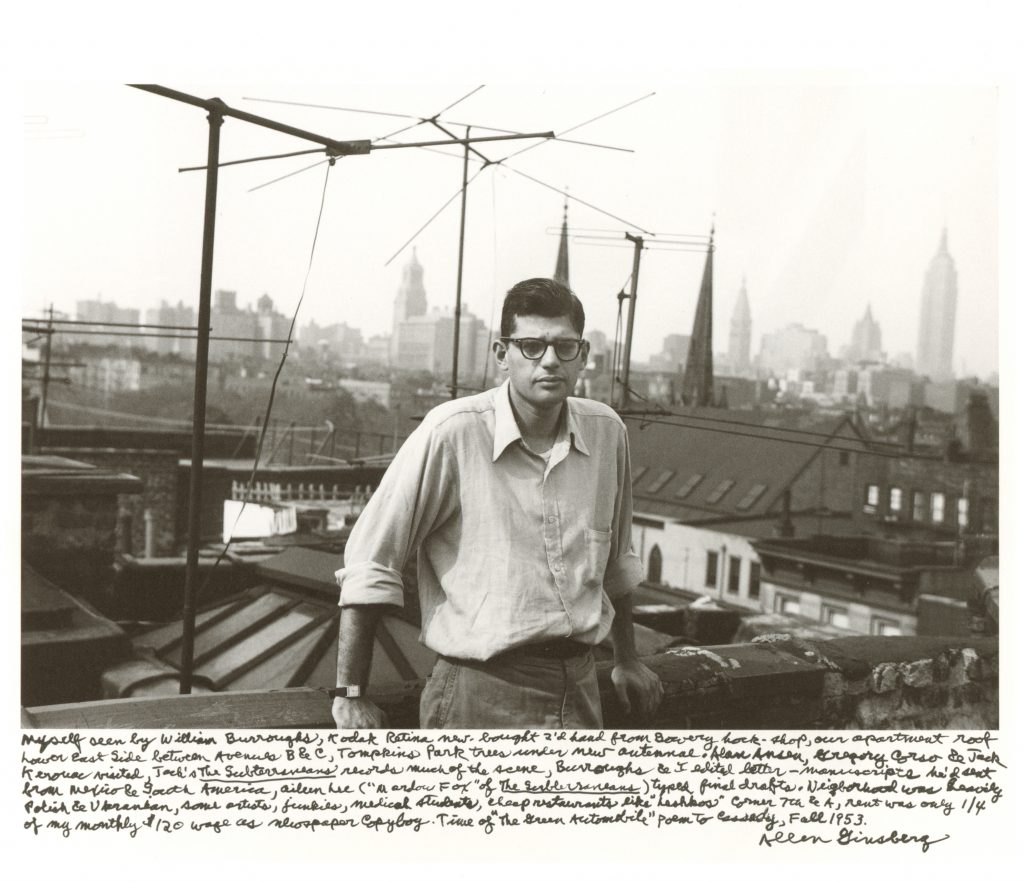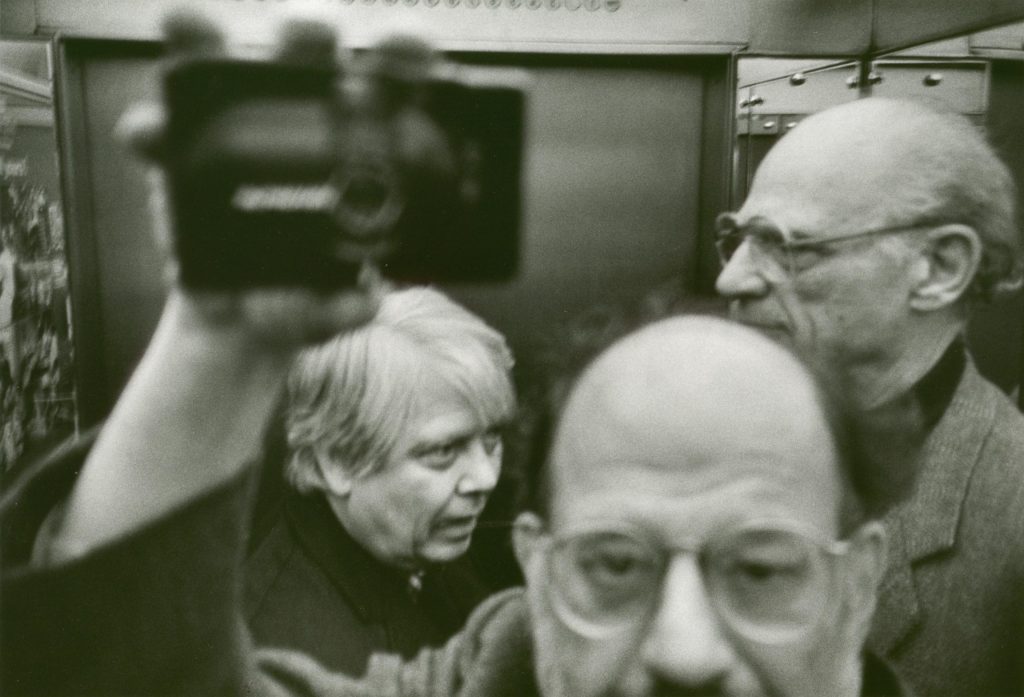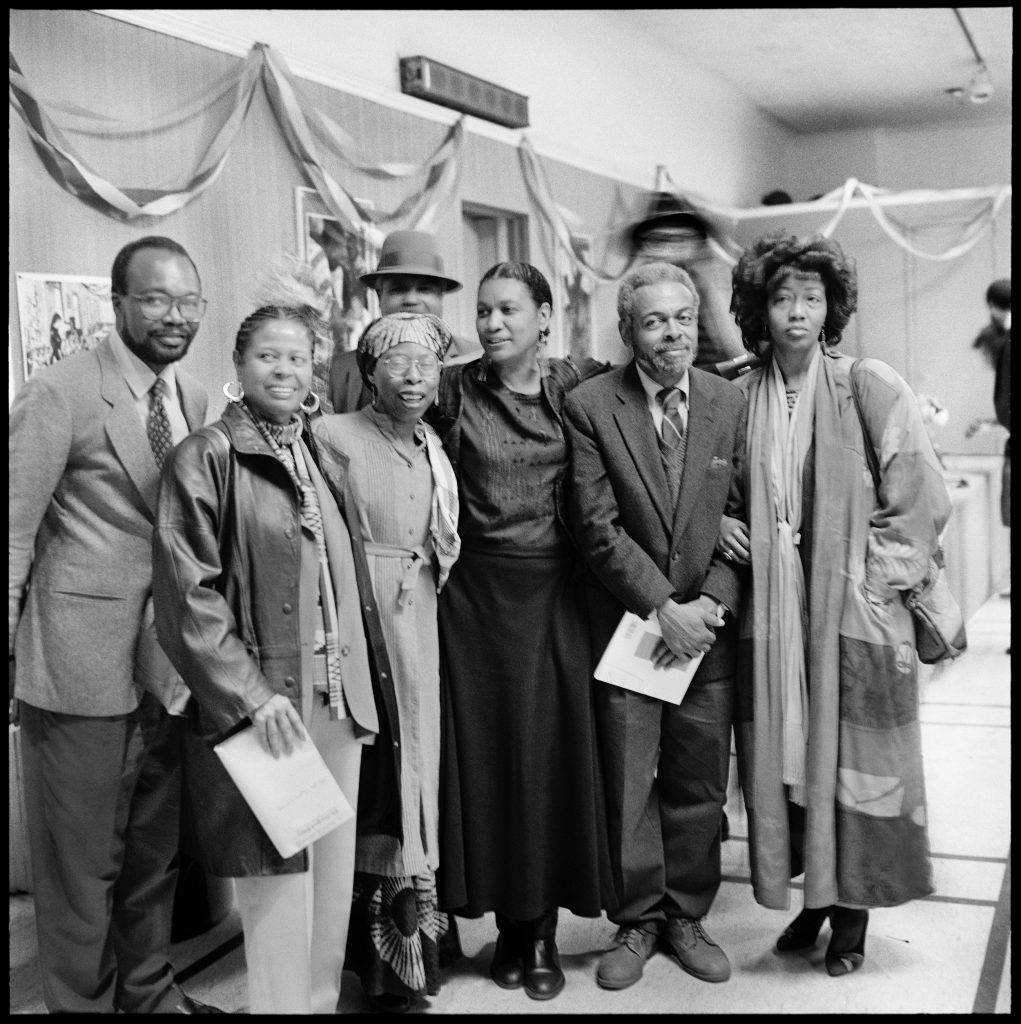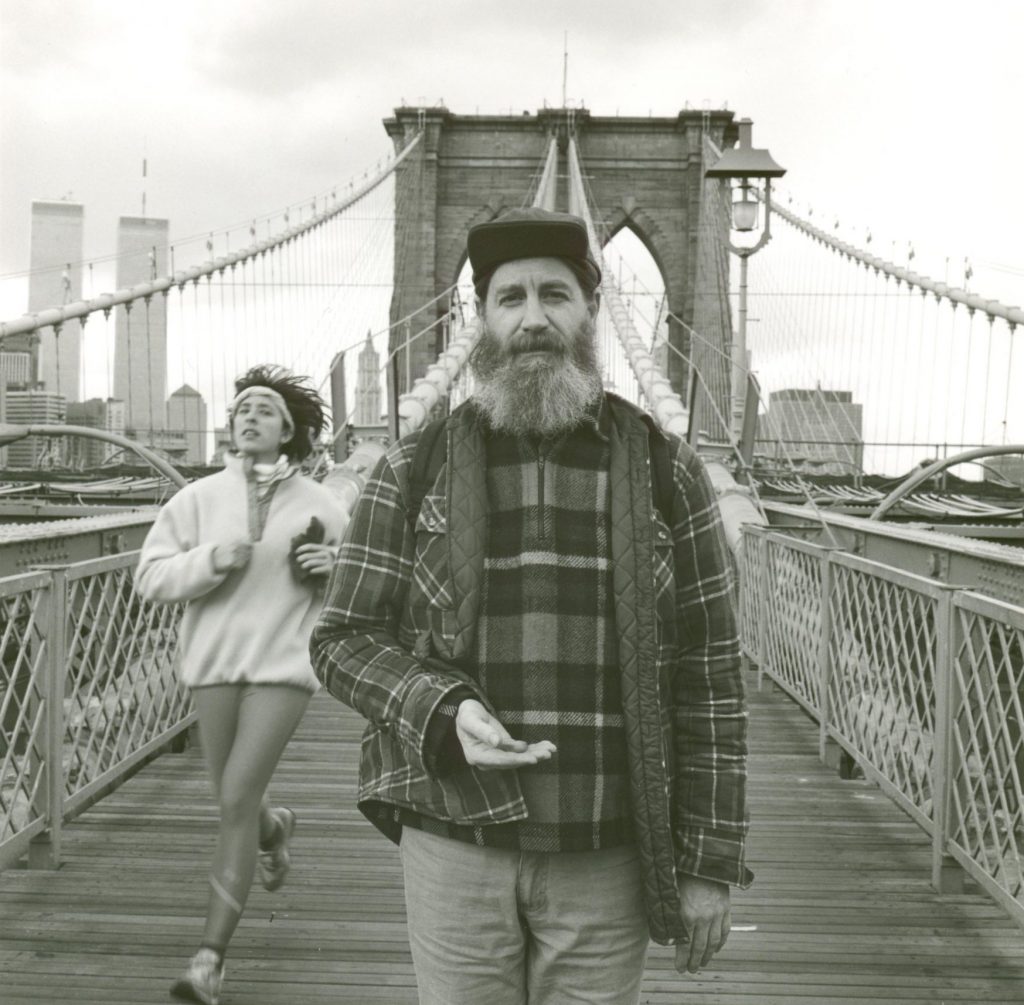On View
A New Show of Allen Ginsberg’s Photographs Will Also Feature Poems Generated by an A.I. Trained on Those Same Images
The poems are billed as "written by Allen Ginsberg’s photographs."

The poems are billed as "written by Allen Ginsberg’s photographs."

Min Chen

A new show at Fahey/Klein Gallery in Los Angeles will see Allen Ginsberg in dialogue with two distinct technologies: one of photography, which the late poet engaged with throughout the decades, and the other, entirely of our moment, A.I.
Ginsberg acquired his first camera, a Kodak Retina, in 1953 and began avidly immortalizing his friends and lovers in pictures. He saw these pictures as “sacramental,” as he wrote in 1993’s Snapshot Poetics, a way of enshrining the spiritual gravitas of William S. Burroughs, say, or Jack Kerouac’s “exquisite… face and gestures.”
“His photos just have that intimacy with deep reverence and admiration for his friends,” Peter Hale of the Allen Ginsberg Foundation told Artnet News, “which is a major component of his poetry: admiration of and reverence for humanity, a celebration.”
The exhibition, “Muses & Self: Photographs by Allen Ginsberg,” gathers such portraits of his Beat colleagues, including Kerouac, Peter Orlovsky, Neal Cassady, and Gregory Corso, captured candidly and spontaneously. But it also goes on to trace Ginsberg’s formal evolution as a photographer beyond this early interest.

Arthur Miller, William H. Gass, Hotel Royal Elevator, Copenhagen, November 1985. Photo: © Allen Ginsberg, courtesy of Fahey/Klein Gallery, Los Angeles.
In 1983, after years of dormancy, Ginsberg renewed his photographic practice by acquiring better equipment on the advice of Robert Frank and Berenice Abbott, and engaging in what he called “continuous reportage.”
“He basically went from taking a roll or two a year to a roll or two every week!” said Hale. “This period through the late ’80s, I consider his richest, with almost every contact sheet producing something significant.”
As his fame and friend circle grew, Ginsberg’s images from this era spanned styles and subjects. There’s a casual group shot at the 1990 Small Press Book Fair, a selfie snapped during an elevator ride with Arthur Miller, a street scene of Keith Haring leaving chalk art on a pavement, and a tender portrait of Patti Smith and Burroughs.
A number of Ginsberg’s photographs further feature his handwritten captions (a custom he picked up from Elsa Dorfman), which fill out the pictures’ contexts and narratives. They were “gems of hyper-compressed information,” said Hale, works of art in themselves that harken back to Ginsberg’s knack for poetic incision.
As Ginsberg wrote in Snapshot Poetics: “In a sense, writing poems and taking pictures have been two discrete but very closely related activities.”

Amiri Baraka, Amina Baraka, Jayne Cortez, Rashidah Ismaili, and friends, Small Press Book Fair, December 2, 1990. Photo: © Allen Ginsberg, courtesy of Fahey/Klein Gallery, Los Angeles.
It’s apt, then, that “Muses & Self” will also unveil a series of poems that have been generated by an A.I. model trained on Ginsberg’s textual and visual output, including his poetry, prose, captions, and more than 400 photographs.
The collection, titled “A Picture of My Mind: Poems Written by Allen Ginsberg’s Photographs,” has been developed in partnership with theVERSEverse, a Web3 poetry collective, and based on its member Ross Goodwin’s 2018 work, Word.Camera. It is supported by the Tezos Foundation and the Allen Ginsberg Estate.
“It’s been exhilarating to see the resonances and associations that pop up between seemingly disparate words, images and moments,” theVERSEverse told Artnet News, “to see from a sort of aerial view how all the relationships and personal encounters and sacred moments captured in Ginsberg’s photographs may have filtered into or out of his writings.”
Built from such a comprehensive ingestion of Ginsberg’s oeuvre, the generated works “speak to us from the past and invite us into the future,” the group added.
The algorithmically generated “Shared Reflections: A Snapshot,” for instance, created in response to Ginsberg’s image, Calcutta Self-Portrait with Peter Orlovsky, 1961, offers: “Who can capture / the fleeting essence / of such a moment, / fragments of the infinite?”

Antler, Poet, Brooklyn Bridge, April 7, 1990. Photo: © Allen Ginsberg, courtesy of Fahey/Klein Gallery, Los Angeles.
For his part, Hale has found the A.I. poems “fascinating,” locating them in the tradition of Burroughs’s cut-up experiments. The Beat writers’ choice technique of automatic writing is also echoed in the generative form, theVERSEverse points out.
While the A.I.-generated poems that make up “A Picture of My Mind” have been edited and curated to keep it “true to [Ginsberg’s] inimitable voice,” theVERSEverse plans to further evolve its generator to reduce the need for such human intervention. Those results are bound for a long-form series planned for the fall alongside generative platform fxhash.
“We’re essentially turning Ginsberg’s historical photographs into poem machines that allow us not just to read his work but also to engage, interrogate, interact, and continuously create with it,” the collective said. “We’re activating these photos and equipping them to talk back, invite us in deeper, and maybe even reveal things we don’t already know or see.”
“Muses & Self: Photographs by Allen Ginsberg” is on view at Fahey/Klein Gallery, 148 North La Brea, Los Angeles, August 10–September 23. A similar presentation will also be on view in New York at Photofairs, September 8–10.
More Trending Stories:
The Company Behind the Wildly Popular ‘Immersive Van Gogh’ Experience Has Filed for Bankruptcy
Drake Outs Himself as Buyer of Tupac Shakur’s Iconic Crown Ring, Sold for $1 Million at Sotheby’s
Fast-Rising Artist Jeanine Brito’s Visceral Paintings Put a ‘Dark and Grotesque’ Spin on Fairy Tales